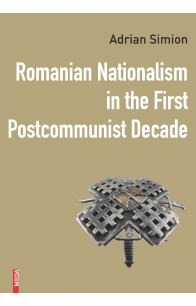Rezultate căutare pentru 'Adrian Ursu��iu'
Romanian nationalism has been and it still is a research topic that has generated and still generates various controversies, both at the level of the opinions of the authors who have dealt with this subject, and at the level of the interpretations that the reader can have on such a topic. And the analysis of the evolution of Romanian nationalism since 1989 is a theme that can be included in this framework of different, and sometimes even contradictory, approaches. Moreover, any analysis of post-communist Romanian nationalism may have its limitations, in terms of the authors’ approaches, and because, in general, approaches to nationalism have a certain potential for inaccuracy. The nationalist phenomenon is very complex because it refers to the people (the nation) and the country and quite often the boundary between nationalism and patriotism, for example, is quite weak. And in the Romanian case, things were even more complicated, both because the nationalism responded to a need for homogeneity existing in the post-communist Romanian society, and because the Romanian nationalism had a specific and quite complex typology.
In this paper, we referred more to those aspects that looked at the presence of nationalism in areas such as society, culture, religion or interethnic relations. Moreover, the period chosen for the study was rather a delicate one, considering the fact that the last decade of the twentieth century was, for Romania, a period of search of the road that the country needed to straighten, after half a century of totalitarian regime. And studying nationalism in such a historical context may have different interpretations, especially since post-communist Romanian nationalism, as some Romanian authors have stated, could be considered as paradigmatic for nationalism in general, because of its subtlety and complexity. (from the „Introduction”)
„Ce second supplément des Inscriptiones Daciae Romanae représente, tout comme le premier, une préparation à la publication des fascicules du quatrième volume des IDR, contenant les inscriptions de Dacie Porolissensis. Il comprend la grande majorité des estampilles sur briques et tuiles du Musée National d’Histoire de Transylvanie de Cluj-Napoca. Malheureusement, pour des raisons techniques, nous n’avons pas eu accès aux pièces prêtées en 1971 au Musée National d’Histoire de Roumanie de Bucarest, lors de la constitution de celui-ci1. Au fil de plusieurs années Mme Viorica Rusu Bolindeț avait apporté dans le dépôt du musée des dizaines de tuiles estampillées du prétoire du consulaire d’Apulum, mais on n’a pas pu agréer aucune solution afin de citer son manuscrit. Du point de vue scientifique la perte n’est pas grande, car il s’agit de types bien connus, publiés dans IDR III/6. En revanche, nous remercions chaleureusement Mme Adriana Isac pour nous avoir permis d’utiliser toutes les pièces provenant du camp de Gilău, dont certaines inédites. Au début de 1997 des tuiles estampillées représentatives ont été envoyées au musée de Zalău en vue d’une exposition illustrant la vie militaire dans le nord de Dacie. Elles n’ont plus été restituées. Afin d’éviter des problèmes administratifs, on les a inclues dans le premier supplément, qui contient les inscriptions sur les briques et les tuiles du musée de Zalău. Le présent volume ne représente pas moins un catalogue du musée de Cluj.” (Prooemium)
„În urmă cu mai bine de 30 de ani, în timpul uceniciei pe șantierele arheologice ale profesorului Gheorghe Lazarovici, ne-am întâlnit pentru prima dată cu studiile interdisciplinare între arheologie și etnografie, religie etc. La vremea respectivă am considerat aceste inițiative drept un pionierat fără o finalitate în cercetarea fundamentală. La cercetările organizate de profesorul Gheorghe Lazarovici am avut onoarea să-l cunosc pe John Nandriș, care ne-a descchis drumul către această cercetare interdisciplinară. Remarc în mod deosebit aportul de nepreţuit al prof. univ. dr. John Nandriş care pe lângă faptul că a făcut posibilă implementarea unui proiect cu tematică etnoarheologică în România acelor ani a atras atenţia întregii lumi ştiinţifice asupra zonei de sud-est a Europei, mai ales a zonei muntoase înalte a munţilor din România, zone prea puţin explorate. Muzeul pe care astăzi îl conduc are bucuria de a prezenta specialiștilor, și nu numai, o serie de studii aprofundate ale acestui domeniu. Instituția noastră, pe lângă preocupările arheologice, acordă o atenție deosebită cercetărilor etnografice din spațiul Banatului de Munte. (..)
Volumul de față reunește studii deosebit de importante din ultimii 30 de ani, care deschid o nouă perspectivă asupra interdisciplinarității arheologice. Prezenta lucrare este o sinteză a unei munci asidue din partea unor cercetători de renume, care valorifică bogatul patrimoniu arheologic şi etnografic al spaţiului românesc. ” - dr. Adrian Ardeț






